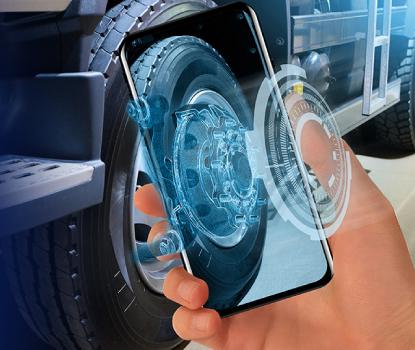Category: Business
Most Common Mistakes To Avoid While Implementing IoT
There are many pressing concerns about the possibilities of IoT in businesses. The most common is probably the question, “Is my business too small to adopt IoT practices?” However, as per the available statistics, the global IoT market is expected to reach $1.7T by the end of 2019. It is surely not unnoticed that IoT implementation has helped businesses both big and small to drive growth and innovation.
Making key errors while implementing IoT can however cause the entire business system to halt. These issues can be those related to device management, data flow across the organization, various partnerships involved, and so on. Security, scalability, cost involved, and the complexity of the system are other key factors.
Let us walk through the most common mistakes made while adopting IoT.
1. Security Concerns Associated With Technology Implementation
More than 80% of the senior executives in industries across the globe suggest that IoT implementation is crucial for positive business outcomes. Since more and more devices are connected to the global network, the highly sensitive data and applications require access restrictions to avoid any malpractices. For instance, the security scope needs to be end-to-end to support connected devices.
An IoT implemented framework needs to be secure. The security concerns could be any of the following:
- An Insecure Web Interface
- Improper Authorization Techniques
- Privacy Issues
- Cloud Interface Insecurity
- Insecurity In The Mobile Interface
- Insecurity In-Network Services
- Software Or Firmware Issues
- Lack Of Physical Security
- Lack Of Transport Encryption
- Issues In the Security Configuration
Poorly secured IoT devices and software make the IoT prone to cyber-attacks. End-to-end security is thus crucial for any IoT deployment. For instance, consider an Internet-connected car wash. Such devices use a default password. In this case, when a security concern arises, it also leads to a safety concern.
The solution here is an external security audit of the implemented IoT device. This builds confidence to perform new IoT implementations as well.
2. Not Being Aware Of The Critical Data Flow Forecasts
Not being able to forecast data volume can be one of the major mistakes in IoT implementation of devices and applications. According to EMC Research, the rate at which data is growing is exponential. It states that the volume of this data would be equivalent to 6.6 stacks of 128gb i-Pads which are fully-loaded, and will stretch from the Earth to the Moon!
Moreover, many businesses think that the more data they extract, the better it is for their business. Many a time, this misconception can lead to storage swelling of both structured as well as unstructured data.
The solution is to ensure the proper working of the right IoT big data business strategy with a clear forecast on different factors. The factors could be the amount of network traffic, storage requirements, and so on.
In case of an already existing functional data system, edge computing can be implemented to ensure intelligent pre-processing of data.
3. Cost Factors Involved In Decision-Making Of IoT Implementation
According to recent statistics, cost savings have turned out to be the major IoT adoption criteria for over 54% of enterprises. Taking into account just the cost factor while deciding to implement IoT might turn out to be another major mistake. Various factors affect the cost of implementing IoT projects. Starting from the number of connections to the device, the type of technology used, to the type and features of the application to be loaded, there are many more.
Hardware, let us say, is a major factor that affects the cost of IoT implementation. The cost of the IoT application is directly proportional to the number of devices used in the connection. Likewise, Infrastructure is another major factor that influences the cost of IoT projects. The infrastructure used could be wireless, middleware, or cloud-based.
4. Lack Of Proper Plans For Device Updates And Replacements
A proper IoT device management is critical to ensure core compatibility of the IoT platform. Device reliability is the most important requirements to ensure an enterprise-ready platform. Device management operations include network, power states, device geolocation, and so on.
Large volumes of data collection, transfer, storage, and utilization can result in malfunctioning of connected devices in the IoT ecosystem. Implementing an IoT platform enhances the integrity of connected devices.
The solution to the pressing concern of planning can be solved through regular monitoring, diagnostics, software updates, and maintenance. Performing frequent OTA (Over-The-Air) updates helps the IoT platform in monitoring and maintaining the device software, fixing bugs, managing firmware, and in customizing the connected devices. This ensures in-depth device protection.
Related Reading: Check out more about IoT – Where and Why should you invest!
In addition to the above-mentioned common mistakes, the following are a few other factors that can lead to IoT errors:
- Lack of setting a realistic timeline for IoT implementation – Achieving a realistic idea on the timeline of IoT implementation is necessary for a positive outcome.
- No Tolerance For Possible Failures – Implementing IoT without having a clear picture of your IoT project can be a big mistake. Leave room for scaling up new ideas.
- Relying Only On Existing Charts – IoT implementation requires dedicated decision-makers instead of relying only on existing organizational charts and decisions.
- Lack Of Technical Expertise – When every part of the IoT project is either reinvented or being contracted out, you are unsure of the third-party development and deployment teams. Technical expertise is the key to a successful IoT project.
Are you looking for an efficient technology partner to help you adopt IoT the best possible way? Get in touch with our custom software development experts today for a streamlined and error-free IoT implementation for your business.
Stay up to date on what's new

Featured Blogs
Stay up to date on
what's new



Talk To Our Experts
What Is Robotic Process Automation?
Robotic Process Automation is the process of applying automation to perform tedious business tasks of the workforce, such as data manipulation, response triggering, transaction processing, and other redundant tasks. According to a recent study by Snaplogic, 90% of the workforce are burdened with redundant tasks. This not only reduces their productivity but also consumes significant amounts of time with which they could perform higher-value tasks.
The Role Of RPA: Features That Enhance Business Process
Once your enterprise has decided to implement RPA, it is time for you to choose the right robotic process automation solution.
Traditional RPA software bots are known to handle only a specific task at a given time. When it comes to addressing high volumes, there is a necessity to clone these bots and run them simultaneously. RPA providers usually charge users for each concurrent process. This can become a costly affair for enterprises, especially during volume spikes. Thus, undue extra costs are a key factor to consider while choosing an RPA solution for your business.
RPA works as a virtual assistant and can handle complex processes starting from performing complicated calculations, data capturing to maintaining records.
In addition to prioritized work queues, user-friendly features, data analytics, and non-disruptive nature, the following are crucial features that enhance business processes:
- Non-disruptive nature: An enterprise can easily implement RPA into their workflows without having to disrupt or change the existing structure or risks.
- Data analytics: Gathering critical data from multiple sources, analyzing and storing the data, and creating reports have brought digital transformation to businesses with RPA. This enables accurate forecasts of sales data along with other Key Performance Indicators (KPIs).
- Prioritization of Internal Work Queues: Every RPA software consists of internal work queues. These work queues are used to extract data derived from various transactions for analysis. The extracted data is then stored on a cloud server and made available for access by the bots.
- User-friendliness: Employees can operate on the robots without any extra RPA knowledge. They only need to learn how the systems work.
- Scalability: With RPA, it is possible to upscale and downscale various robotic operations.
Related Reading: Learn more about how Robotic Process Automation is revolutionizing industries.
Types Of Robotic Process Automation Tools
RPA enhances robotic performance in different ways. The three major categories include Working Robots that are commonly used for Data Collection and Project Planning. Monitoring Robots detect faults and breakdowns, whereas Screen Scraping Robots provide data migration tasks for enterprises.
Robotic Process Automation tools come in varying sizes and shapes. Analyzing your business objectives is the most critical factor before deciding to choose a specific RPA tool for your business. A few of the major RPA tools are as follows:
- Attended Or Robotic Desktop Automation Tools
This type of automation always starts with the user via the user’s desktop. The user first launches the RPA code to perform required operations rather than waiting for the workforce to perform.
- Unattended Automation Tools
This type of automation completes business processes in the background and is used mainly to perform back-end tasks.
- Hybrid Automation Tools
This type of automation combines both attended and unattended automation tools to perform start to end operations.
Related Reading: You might like to read more about ways to empower RPA for enhanced business growth.
How To Choose The Right RPA For Your Business
A clear set of objectives form the primary goal before opting a specific RPA tool for your business. The following are the key factors you need to consider before selecting an RPA tool for your business:
1. Easy-to-use Interface
Simple user experience is a major criterion for choosing the right RPA tool for your business processes. A simple user interface will ensure all employees work efficiently.
2. Proper Deployment
An RPA tool that can be quickly deployed with the existing technology stack is what is required.
3. Cost
Replacing tedious tasks performed by the human workforce is largely replaced by the bots. This process of automation saves costs. Employees can focus on their core tasks and spend time and effort on their skills rather than performing redundant and tedious tasks with the help of RPA tools. Purchasing an RPA software tool involves associated costs, such as cost of individual licenses, cost of the software, and other overheads.
4. Scalability
Implementing an effective RPA tool enhances the business processes and leads to the growth of the enterprise. This growth is accompanied by hiring more resources. Thus an RPA tool can enhance the scalability of a business in the long run.
5. Security
Data analytics, compliance, and financial transactions require a highly secure environment. A great RPA software tool ensures a secure solution for all business processes and updates as well.
6. Architecture
The architecture of the RPA depends on where you plan on employing your RPA tool. The deployment and maintenance of an RPA tool depend on factors such as layered design, component reusability, robust delivery, popular language support system, easy accessibility, and so on.
7. Features
Choosing an RPA suite that consists of solid inbuilt features is critical. Flexibility, scope, availability of wizards and GUIs, other extendable commands and supports are some of the features to consider.
8. Exception Handling Support
A robust RPA solution can detect errors during automation and automatically resolve without human assistance. In other cases where human intervention is required, an effective RPA tool must be able to send error messages.
9. Extended Support
Different vendors offer different support. A dedicated support team is necessary to ensure strong maintenance and support.
To make the best decision on choosing the right RPA solution for your business and access the full potential of RPA tools, get in touch with our experts today!
Stay up to date on what's new

Featured Blogs
Stay up to date on
what's new



Talk To Our Experts
What Are Cobots?
Cobots have been around since the 1990s. Cobots operate in conjunction with humans to perform given tasks. They are built to interact physically with humans in a shared workspace.
In other words, cobots or collaborative robots can be defined as the hardware version of Augmented Intelligence. Rather than replacing humans with their autonomous counterparts, collaborative robots augment artificial intelligence technologies to physical bots. According to Barclays, cobots can revolutionize production. This is effective, especially for smaller companies, that account for 70% of the manufacturing industries, globally.
Cobots help in improving human capabilities in performing tasks with greater strength, accuracy, and data capabilities. The first collaborative robot was a device used to directly interact physically with a manipulator that was computer-controlled’. It was invented by J Edward Colgate and Michael Peshkin in the year 1996. Later, Kuka Robotics launched its first collaborative robot in the year 2004, named LBR 3.
How Are Cobots Useful In Various Industries?
Since Cobots are capable of performing tasks alongside humans instead of replacing them, there is a multitude of ways in which Cobots are used in different industries for varying purposes. The major ones are as follows:
1. Hand–guiding: This cobot has an additional hand – a pressure-sensitive device at the end of its arm. With this arm, the human operator can teach the collaborative robot how to hold an object or how to move, or how fast to move, and so on. It also ensures that nothing gets damaged.
2. Speed and Separation Monitoring Cobots: This particular cobot operates in safety zones. Instead of stopping to perform its task when it senses an outsider’s presence in the safety zone, this cobot slows down and then tracks the location of the human. It stops as the human gets too close.
3. Power And Force Limiting Cobots: These collaborative robots are designed to frequently interact with humans. This specific cobot stops or reverses its movement on encountering any abnormality.
4. Safety Monitored Stop Cobots: These cobots are designed to work independently, but stop whenever a human needs to intervene. This cobot senses human presence and stops all movement until the human has left the safety zone.
Related Read: Check out how Robotic Process Automation Is Revolutionizing Industries
How Collaborative Robots Offer Game-Changing Benefits
Cobots have been brewing in the web-space for quite some time. In general, robots have replaced human labor from the industrial workforce since the industrial revolution. Robots, but operated within safe environments. Cobots, on the other hand, help in putting away some of the major spatial and environmental dangers that robots may cause, whilst working alongside humans!
Cobots can also be easily reprogrammed. Many businesses and industries are skeptical about falling behind their competitors, especially in situations where irrecoverable disasters are likely to take place. Here is when cobots can be an effective solution. Let us walk through the major benefits that collaborative robots offer in various industries:
1. Increased and efficient Human-Robot Interaction
In any given industry utilizing bots for performing tedious tasks, time, cost, and floor space are the three major critical factors to be considered. This is because the operator can work alongside the cobot, without having to leave the workspace. Cobots are known to reduce idle time of human workforce by 85%.
Consider a traditional assembly line that is set up in a workspace. Here the human workforce sets up the mechanical robots with required parts to perform the rest of the tasks. The entire production will be put to halt for a long time or stopped from its current operations, in case of any required human intervention. While on the other hand, a collaborative robot works along with the human workforce, which increases the efficiency significantly.
2. Applicable To Small And Mid-Sized Industries
Strategies to optimize costs are a major concern in every industry. This is because larger industries that have a higher production volume prefer a robot to perform tedious tasks. On the other hand, smaller industries prefer manual labor.
Implementing cobots can be beneficial across a range of industry sizes, as these bots do not require a heavy set up process.
3. Safety In Handling Dangerous And Tedious Tasks
Preventing human error is critical in every industry. For instance, steadying the movement of tools used in surgeries is complex. The process needs to be highly accurate as well. Cobots ensure a safer working environment by preventing human errors that can hinder operation accuracies.
4. Increased ROI
Cobots can be conveniently relocated whenever required. This makes it easy to eliminate any non-productive activities during working hours. In addition to being highly efficient and flexible, cobots ensure increased ROI due to significantly reduced labor and maintenance costs. This also results in an increased profit margin as well.
Related Reading: Read on to learn how you can accelerate your business growth with Robotic Process Automation.
Future Of Cobots
By the year 2020, cobot sales are expected to cross $3.1 billion. The sales of cobots are increasing every year. According to Barclays Equity Research, analysts state that the global sales of cobots have crossed US$120 million in the year 2015. This figure is forecasted to grow to $12 billion by the year 2025!
The figures above illustrate that the sales of cobots are just 5% of the total robot market. This figure is forecasted to grow exponentially as more industries start to explore the multitude of possibilities of these bots.
To know more about how cobots can be leveraged for your business, drop a call to our strategists right away!
Stay up to date on what's new

Featured Blogs
Stay up to date on
what's new



Talk To Our Experts
Stay up to date on what's new

Featured Blogs
Stay up to date on
what's new



Talk To Our Experts
How Can You Successfully Build A Mobile App?
From the moment we wake up to the minute we fall asleep, mobile apps have become an indelible part of our lives. The number of mobile phone users is forecast to reach 4.68 billion this year! With a consumer-driven economy here to stay, businesses must adapt to what the consumer needs and where he needs it – at his fingertips and at his convenience. Understanding this need, businesses have got on to the bandwagon and are going full steam ahead on mobile app development. While this is the way to go, remember that not every mobile app is successful. There are a few vital points to keep in mind when developing a mobile app and this blog will discuss a few of them.
Related Reading: Find how mobile apps can unleash innovation and transform businesses.
Top Points to Follow While Developing A Mobile App
Developing a mobile app isn’t a small investment. Research shows that it could take an investment of more than $270,000 to design, build and launch an app and could be much higher depending on the complexity of the app. Considering the investment involved, you would think that it would be an automatic success. Yet, experts say that two-thirds of apps will fail to reach 1,000 downloads in the first year. Even more alarming is the research which shows that 23% of those who download the application abandon the app after a single use!
Staggering numbers, aren’t they? Cost issues, bad tech, competition, failure to understand the actual need of the customer and other factors contribute to this failure. This is why it is vital to have all your ducks in a row before you get to mobile app development. Here are a few tips to ensure that your mobile app sees success and doesn’t join the numbers as a failure.
1. Understanding Need
Customers are not going to use your app if they do not see the value in it for themselves. That goes much beyond simply displaying your products or services and giving them a way to buy it through the app. The important question is: Why will the user download the app, make space for it on their phone and use it to engage with your business? This will only happen if they have a use for it and an emotional connection to it. That involves understanding customer behavior and how to cater to it.
The Fogg Behavior Model is often mentioned in this context. According to this model, “the behavior of a person is influenced by his motivation to perform a particular action, his ability to perform it and finally, the trigger.”
Understanding what the needs of your customers are, will help you determine the motivation factor. Recognizing the features that make your app more user-friendly, will help you influence the ability of your app. Finally, using technology like machine learning to understand the right time and the right way to introduce the right product will lead to greater success. This will push them to engage with your app and consequently with your business.
Preparing a proof of concept is an important factor in understanding if there is a need for your app and the motivating factor for customers to use the app. What are the challenges faced by your customers? Are there solutions to these challenges and how will your application provide it? These are the first questions to be addressed before you start on development. The research will help you determine who your customer is, what they need and how you can provide it. This will help you plan the functionality and design of your app in a way that will encourage downloads and engagement.
2. Selecting the Right Platforms and Database
As important as it is to get the design and the code for the mobile app right, it is equally important to decide which mobile platform you will need to build your app on. This is the foundation on which your code will rest. Of the many mobile platforms that came and went, iOS and Android have made their mark among consumers and it looks like they are here to stay. Now taking these two as the base point, you will still need to determine which mobile platform your app will be used on. You should also consider if your interests will be best served if you design for both or opt for a hybrid platform.
Since the language used by the developers will have to be natively supported by the platform you choose, this factor is vital. Your budget, the time and resources you employ, and the ultimate success or failure of the app will be influenced by this decision so tread carefully. Give careful consideration to your customer demographic. Are they predominantly Android users or iOS? What are the costs of designing the app on each platform? Will it be better to consider native app development or close-platform? Choosing the right database is also an important factor to consider as this will be crucial to the performance of your app.
3. Design Goals
This is where it all boils down to – Design and functionality. A mobile form design should be intuitive, clear and engaging.
Specification: The first consideration should be about what you want users to do once they have the app open. Decide what you want to include and what might be redundant to users. Listing functional and non-functional requirements clearly is the start line of the development.
Visual Design: Information presented in a clean and focused manner is vital to draw the attention of users in the direction you want to lead them. Using single fields of input and optimizing the information, appears like a conversation you are having with your client is important.
4. Security Considerations
With mobile applications, collecting sensitive information and gaining access to other information on their mobile device, consumers want to know that their information is safe. They want to know that adequate measures have been taken to comply with data protection laws. Integration of payment gateways in the application adds another level of concern when it comes to security.
Related Reading: You might also like to read about the top security issues in mobile app development.
This is why the onus lies on you to ensure security. For this, you will have to secure the app’s code from the ground up. Encryption of the code, files, and databases, securing network connections on the back-end, enabling authentication and identification technologies, and other robust security measures are vital in mobile app development.
The success of a mobile application highly depends on the strategies and approaches implemented. Check out our Whitepaper to know how to select the best approach for Mobile App Development.
Ensuring the Success of Your Mobile Application
If mobile application development is on your mind, we understand if you might feel bitten off more than you can chew. Mobile app development needs careful consideration, but with the right guidance, it can be the best thing that has happened to your company. Connect with our IT consultants today and let us simplify it for you.
Stay up to date on what's new

Featured Blogs
Stay up to date on
what's new



Talk To Our Experts
Ways Small Businesses Can Benefit From Artificially Intelligent Systems
It is quite obvious how Artificial Intelligence has become a part of almost every industry verticals. In addition to enhancing intelligence and productivity to operations, AI is widely used by businesses to predict online customer behavior, manage supply chains, automate various difficult and redundant tasks.
According to a recent survey by Vistage, about three-quarters of businesses will invest in software applications. No wonder the AI revolution is also termed as the fourth revolution!
Starting from voice search mobile app development to self-driving cars being able to prompt the driver with possible destinations, most small businesses are jumping into the AI bandwagon. The early adopters of AI implementation have seen a considerable improvement in business turnover and in achieving an increased ROI.
Businesses have improved their turnover and overall performance by making use of data. Small businesses can make use of the AI Revolution to leverage the available data. This can bring a change in their overall business processes. Below are the major benefits that small businesses can reap out of AI:
Discover How AI Can Benefit Your Business.
1. Leveraging Artificially Intelligent Solutions
The fact that any business process can involve AI implementation proves the importance of large chunks of data being generated. To stay competitive, it is essential for businesses to follow the latest trends in the market. This is made possible by deriving insights from data available to predict business outcomes. The possible benefits of AI enabled systems are as follows:
a. Small businesses can use Artificial Intelligence to understand customer segmentation. AI is used by businesses to gather data and then perform market analytics. They can use AI to advertise as AI helps in providing insights to target the right customer base. This helps in determining market-fit customers rather than having to target clients blindly.
b. Small businesses can also make use of AI strategies. For instance, businesses can use third-party AI tools that involve easy interfaces and machine learning algorithms. This will help businesses to couple the critical data and workflows into business intelligence. This helps businesses to achieve practical insights. It also helps in saving time and costs that arise due to data review.
2. Creating Artificially Intelligent Customer Service Solutions
AI-powered chatbots steal the show when it comes to enabling Digital Customer Services. Estimates show that 67 percent of businesses use chatbots for rendering customer services. This number is forecasted to reach 85 percent by 2020.
Voice-search assistants are no exception to customer service solutions. The number of electronic assistants is expected to reach 7 billion by 2020. Chatbots and voice-search assistants can definitely help small businesses increase their productivity and efficiency.
Related Reading: Check out how capitalizing on chatbots will help in redefining your business.
3. Artificial Intelligence For Building A Positive Workplace Culture
Small businesses often find it difficult to hire talents. Artificial Intelligence has made it simpler for the HR Departments of small businesses to recruit talents by eliminating the need for HR managers to manually set and select through the large pile of candidate profiles. AI helps in building a positive workplace culture in the following ways:
a. Hiring is made easier by Machine learning algorithms. The process of hiring is streamlined by AI. The algorithms do so by the process of learning hiring practices of the past. AI applications help in finding good leads by learning an applicant’s history of work and studies and makes the hiring process easier.
b. Sales can be made simpler for small businesses with the help of AI applications. AI-enabled CRM platforms help businesses to derive insights. CRM systems compile data from different customers via phone, email, etc. This is done for automated lead generation. Sales folks of small businesses can make use of AI enabled CRM systems to adjust their leads by analyzing customer ideas through different channels like recording phone calls, emails, phone messages, online behavior, customer reviews, social media posts, etc. This helps the sales team of businesses to personalize their business, according to customer intentions.
c. Small businesses can use AI applications to manage back-end operations cost-effectively. Financial accounting and scheduling daily tasks to employees can be managed more effectively with the help of AI enabled tools. This helps small businesses save time from performing redundant and manual tasks.
Related Reading: Here’s an ultimate guide for you to enhance your existing business application with AI.
4. AI For Effective Data Collection And Competitive Analysis
Identification of competitors is crucial for any business. AI helps in building a competitive analysis that searches for competitors in particular fields. This helps small businesses to collect critical data regarding different competitor strategies.
Businesses learn about the latest trends from the collected data. This is performed via advanced AI methods such as statistical regression analysis. AI has made it cost-effective for small businesses to use sophisticated AI tools that help them in determining how to keep clients interested in their business.
Machine learning algorithms make use of customer sentiments to capture and track customer preferences. This data collection mechanism is made available affordable by AI for small business.
Competitive Intelligence implies being able to react to market trends rapidly and accurately. It is therefore essential for small businesses to be up-to-date about the current market trends. Tracking competitors, changing business processes to suit customer requirements, analyzing cost changes and business metrics is required for a business to succeed. This is made possible by AI-powered competitive intelligence tools.
Related Reading: Read on to know how artificial intelligence can enhance intelligent app ecosystem.
5. AI Enabled Tools To Enhance Marketing Strategies
Any business requires deep know-how in technology to enhance its marketing functions. Small businesses find it difficult and costly when it comes to hiring top-notch professionals to handle large marketing campaigns.
Small businesses can make use of AI enabled tools to manage marketing activities. AI helps in reaching out to a large audience online by making use of advertising platforms. For instance, Facebook and Google have implemented advertising platforms that are AI implemented. This targets specific customers making it easier to collect and analyze data that is critical for lead generation.
CPC (Cost Per Click) can be considerably reduced by implementing AI tools. In addition to being able to find the best marketing strategies, AI enabled tools also analyze consumer engagement via marketing campaigns.
Artificial Intelligence is an effective budget monitoring source for marketing management activities for a business.
The Artificial Intelligence Revolution can jumpstart your small business to its height. Get in touch with our tech-breathing IT consultants now to learn tips on how to start!
You may also be interested in reading Top AI Technology Trends To Watch Out For In 2019
Stay up to date on what's new

Featured Blogs
Stay up to date on
what's new



Talk To Our Experts
Key Features And Benefits Of An Artificially Intelligent Ecosystem For App Development
Artificial Intelligence is omnipresent in this digital era. Artificial Intelligence and human intelligence work together to deliver numerous solutions at the technological forefront. The global artificial intelligence market size is expected to reach $169,411.8 million in 2025. The leading application development trendsetters such as IBM, Microsoft, and many more global leaders have adopted Artificial Intelligence as an inevitable part of their advancements in bringing up the intelligent app ecosystem.
Artificial Intelligence has its key segments in the market based on Technology and they are Machine Learning, Speech Recognition, Image Processing, and Natural Language Processing along with various other industry verticals.
What is an AI application?
Putting it in simple words, AI is the reason why your smartphone when connected to your car’s Bluetooth gives a beep with a message about the traffic conditions and in what time you are likely to reach your destination you often travel to. Artificial Intelligence makes this possible via its pattern recognition skills which it formulates over a period of time, known as machine learning!
For instance, Microsoft has developed a productivity AI application known as ‘Office Graph and Delve’ of Microsoft Office 365. It collects data and shows only relevant content to users according to their priority. Other examples include:
- Voice recognition apps with GPS.
- Search engine applications.
- Chatbots or AI-enabled assistants.
- Personalized shopping applications that make use of Google Analytics.
- Financial applications that are both accurate and efficient in calculations and providing results, such as automated advisors, powered by AI.
- Autonomous vehicles, drones.
- Transport apps powered by AI, Google Maps, etc.
- Social Media applications.
- Smart home devices that make use of data science like smart voice assistants.
- Creative arts such as Watson Beat, yet another powerful AI implemented the app.
- Security apps that implement Facial Recognition and image processing technologies.
Making Mobile Apps Intelligent With AI
The first quarter of 2019 witnessed over 2.1 million apps available in Google’s Play store for Android users. Apple’s Appstore was the second largest to have over 1.8 million apps ready for download.
Related Reading: Read on to learn how voice app can enhance your business.
With such intense competition, app developers are looking for ways to create personalized applications. The solution to this is AI implementation. The role of AI in an intelligent app ecosystem is to make the applications learn the intention of users. Machine learning and Data analysis features form the Intelligent Ecosystem for these applications.
The AI ecosystem increases the efficiency of programs and machines and also allows users to predict user intentions online like their purchasing trends and other social behaviors when they are online. The following are some of the roles played by Artificial Intelligence in an intelligent app ecosystem:
- Multi-faceted technology that incorporates machine learning algorithms and deep learning.
- Implements Big Data, Neural Networks in its programming.
- Predicts user communication and intention online in real-time.
- Automates functions.
- Can make informed decisions for specific users.
- Can create analytics from a history of searches.
- Interprets tasks using preassigned commands.
- Provides personalization.
- Accurate Insights
- Perfection In App Development Features
- Efficient Ways to Complete Redundant Tasks
- Enhanced User Satisfaction
- Notifies Important Details making operations easier
AI integrated applications help in improving success rates and also increase app performance. Along with helping machines to mimic humans and its problem-solving capacity, AI has become an inevitable part of app development with its ability to learn, perceive and manipulate data.
AI protects an application user’s data. It performs an analysis of the data for identifying user patterns and behavior online in real-time. This data can be used to provide better customer experience and for user engagement.
Role of Artificial Intelligence is also in aiming at generating revenue through efficient user interfaces.
Related Reading: Are you planning on enhancing your business with AI? Here is a guide just right for you.
The Intelligent App Ecosystem: How It Functions
Applications are becoming more intelligent each day. Staying ahead of the game is crucial for app developers with users wanting a personalized experience and much-improved experiences. The following are the latest trends in AI intelligent app ecosystem:
- Wider use of machine learning techniques.
- Wider adoption of microservices for app development.
- A rapid increase of numerous platforms to develop applications.
- A rise in the adoption of various machine learning models.
Various layers of technology are involved in the development of artificially intelligent applications. Artificial Intelligence plays a major role in modeling the market dynamics of businesses to a large extent. In addition to creating new opportunities, be it for startups or even for large industrial giants, artificial intelligence provides numerous implications on the development side including the following key features:
1. Customer Experience with machine learning defines an intelligent app ecosystem
Every business needs high-quality data that will suit their specific application needs. So the machine learning models are required by user data specific companies. For instance, for Google, it was the ‘search’ function, ‘entertainment’ was defined by Netflix, Facebook for the ‘social’ amenities and many more such specific intelligent applications.
Many more categories include healthcare, personal assistants, retail, agriculture, sales, security, automation and many more industry verticals. Machine learning along with user critical data have formed the basis of these applications on the artificial intelligence vertical.
Related Reading: Here’s how you can redefine your business with AI chatbots.
2. Cross-platform services With The Intervention of New Platforms
There are many cross-platform mobile applications developed on cross-platforms such as hybrid and native platforms. Consider Facebook Messenger and Amazon’s Alexa. The added features make it more user-friendly and even beneficial on the sales front. This also becomes simpler for industries to perform when they can deliver their products/ services across such platforms as it is all about adding a new layer of API that connects with the entire existing microservices for authentication and other critical functions. These interfaces, thus revamp the existing applications into macro-services.
3. Machine Learning Models And Intermediate Services For Business-Specific Platforms
Pre-trained machine learning models can be used as plug-and-play for performing functions such as natural language processing, image processing, etc. These are the intermediate services. On the other hand, there are raw intelligence providers that form the building blocks. These two are the major 2 types of industries that provide value to the intelligent app ecosystem.
4. The Big Data Technology Analysis And The Intelligent App Ecosystem
Do you know what Hadoop has contributed to enabling an artificially intelligent ecosystem of app development? The hardware companies that store large chunks of IoT data and other transactional data perform? Well! Big Data Analysis is how businesses keep up with the intelligent app ecosystem.
According to the latest IDC forecast, 75% of the commercial enterprise applications will make use of AI by 2021. This shows that deploying AI for app development will lead your business to have an intense advantage over your competitors in the near future. To learn more about how you can capitalize AI for your business benefits, get in touch with our custom software development experts today!
Stay up to date on what's new

Featured Blogs
Stay up to date on
what's new



Talk To Our Experts
How Face Recognition Apps Are Defining The Future Of Competitive Industries?
There has been a lot of talk about Face Recognition Apps recently. It has received accolades for its use in enhancing security as well as flak over privacy concerns. Speculations aside, there is no denying that face recognition software has revolutionized the way we perceive technology. It is no longer a faraway concept as it finds a place in our pockets through mobile technology.
In this blog, we will look at the technology behind face recognition software, what makes it tick and how it has found application across industries.
What Is A Face Recognition App?
Face recognition is a biometric technology that creates a face print of an individual by mapping out his or her facial features mathematically. This face print is stored and used to compare a digital image of a person verifying their identity.
This mapping is done by identifying 80 nodal points on a human face. These nodal points are used to measure different variables of the face. The width of the forehead, the length of the nose, the shape of the eyes – these measurements are captured on a digital image of the person’s face and stored as a face print. Deep learning algorithms are then used to identify a person in comparison with the face print.
This technology has been used in various ways from automatic photo tagging by apps like Facebook for authentication and identification by Apple’s iPhone X. The way in which Apple has used this technology is interesting. Face ID technology, which allows users to unlock their phones using the stored face print, is designed with 3-D modeling. The software compares over 30,000 variables to fine-tune recognition capabilities. This face print or Face ID can be used as authentication for purchases done with Apple Pay and other Apple stores. Amazon Rekognition, Google Cloud Vision API and other image analysis APIs can be now used to add facial recognition capabilities to other applications.
The inclusion of technologies like augmented reality, mixed reality and more have made face recognition software a powerful force. At Fingent, we developed a mixed reality application using Microsoft Hololens. This application helps in the identification of a person and also links the face print to the biodata of the person. It will also be able to capture images and compute similarities between the captured image and all the other images in a secure database.
Read More: The future of communication and security using augmented reality.
The Role of Face Recognition Apps in Safety and Protection
According to a Javelin Strategy and Research study, identity fraud hit a record high with 15.4 million U.S. Victims in 2016 and an increase of 16 percent from previous years. In a connected world where such vulnerabilities exist, face recognition software is proving to be an invaluable asset. The software is helping law enforcement and corporate to put a name to the faces of criminals who have been playing havoc with stolen identities. Some applications of face recognition software in ensuring safety are:
- Identity validation at ATMs and prevention of identity theft with photo IDs.
- Face recognition surveillance systems in schools to protect students from expelled students or parents who have been flagged as dangerous.
- Equipping law enforcement personnel with identification of criminals and contextual data to warn them of dangerous persons before they approach offenders.
- Automated facial recognition (known as AFR) helps in forensic investigations by identifying individuals on surveillance cameras and videos, as well as in recognition of dead/unconscious individuals at crime scenes.
- Protecting retailers from shoplifters by warning security personnel of known criminals with a record. It also helps them avoid potential violence in the store by warning them when dangerous criminals or disgruntled former employees enter.
How Various Industries Can Benefit from Face Recognition Apps
Apart from ensuring safety and prevention of identity theft, face recognition software has many commercial applications as well. Many organizations across industries are recognizing the vast potential of face recognition apps and exploring different ways to capitalize on its features. Let us look at the Healthcare and Retail industries as an example.
Healthcare
Healthcare is constantly making giant strides with technology and facial recognition is contributing in unexpected ways. Researchers from the National Human Genome Research Institute (NHGRI) in the United States have come up with a face recognition system, which can diagnose a rare genetic disease called DiGeorge syndrome. People with this syndrome exhibit particular facial anomalies, which give them characteristic expressions that can be detected by facial recognition software. Despite the many challenges associated with effective detection, the team has developed software with an accuracy of 96.6%.
Another example of face detection software being used in healthcare is the facial recognition app developed by Listerine. This app enables a blind person to detect when somebody is smiling at them, by setting off vibrations when the face recognition app detects a smile. This helps the blind respond better in social situations, thus contributing to their quality of life.
Speaking about the further possibilities that technology can bring to healthcare, Christoffer Nellaker, of the Medical Research Foundation’s Functional Genomics Unit at Oxford says: “A doctor should in the future, anywhere in the world, be able to take a smartphone picture of a patient and run the computer analysis to quickly find out which genetic disorder the person might have”. This is already coming true with the help of face recognition.
Related Reading: Check out how modern healthcare is revolutionizing with automation.
Retail
Retailers have been using augmented reality to improve the customer experience for a while now. The retail giant Sephora has gone one step further and added a live 3D facial recognition feature to its Virtual Artist application. This enables a more accurate facial tracking and rendering, allowing users to virtually try on Sephora’s various products while they are moving in real time. Parham Aarabi, CEO of ModiFace, which is the developer of this function for Sephora says: “We believe the ability to see yourself with products can impact sales online … and thus the integration on Sephora will, based on our expectation, result in increased conversions and user engagement.” The goal with this move is to enable customers to try on their products in a fun and more interactive way. The accuracy enabled by this technology will go a long way in enhancing the customer’s experience and boosting sales.
By using face recognition software in making educated guesses about a potential customer’s gender, age, etc., big retail giants are optimizing their ad campaigns to specific target audiences. Such advertisements are more effective as they help deliver a targeted message that has a powerful effect on consumers. An example is the “Because I’m a Girl” campaign rolled out by children’s charity Plan the UK. The charity created bus billboards, which would scan the viewer’s face and display an ad depending on the viewer’s gender. This was done to highlight the plight of women who are denied rights based on their sex. Brands like Virgin Mobile, Nike and others have also used face recognition software to create a more immersive ad experience for their customers.
Related Reading: Find top ways to leverage smart IT solutions for your retail business.
Implementing Face Recognition Technology
Face recognition software is closer to home than we think, and it is apt to look at ways in which your company can capitalize on its capabilities. Talk to us and let’s discuss how.
Stay up to date on what's new

Featured Blogs
Stay up to date on
what's new



Talk To Our Experts
A Comparison Between Tableau and Power BI: The Most Powerful Leaders In The BI Market.
Business Intelligence or BI tools are a precursor of the world-altering digital technology in this modern technology landscape. Analytics plays a key role in determining which Business Intelligence tool is a better choice. This is because the more flexible the analytics platform offered by a specific BI tool is, the more it provides businesses to customize applications that need updates. Let’s take a deeper look at how Power BI is different from Tableau and which technology promises a better future for your business.
Related Reading: Read on to learn more about Business Intelligence. What it is and how your business can get the best from it.
Tableau And Power BI
Tableau was the first and foremost to come into the market. Though both Tableau and Power BI are well-known to be able to execute fine enough, Power BI has an advantage of making itself accessible to even the no-techy users, making it possess a higher adoption rate than Tableau.
On the other hand, Power BI is ranked higher on one of the key characteristics in terms of its Data Visualization, according to Gartner’s Magic Quadrant.
However, Microsoft’s Power BI has the most user-friendly features in terms of ‘completeness of vision’ or ‘Data Visualization’ capability and has been embedded within Office 365. But Tableau offers advanced functionality and it is best considered for power users.
So to choose a BI tool that is the best fit for your business, it is important to first learn about the analysis needs. In the recent decade, Power-BI and Tableau have emerged as the two powerful BI tools.
Let us look at how companies can choose the best for their business from the following key factors:
Cost
Cost of Tableau is on the higher side when it comes to larger enterprises. The primary reason for this premium cost is the need to build data warehousing. Thus, it is advisable for a startup to choose Power BI initially and then consider Tableau when required.
The professional version of Power BI costs you less than 10$ whereas, on the other end, Tableau would cost you more than 35$ per month per user.
Reporting
Power BI supports Predictive Modelling and Reporting when on the other side, Tableau opts for Data Visualization.
With Power BI, we can create visualizations by queries and natural language. Say, for instance, Cortana PDA (Personal Digital Assistant). Power BI is said to place a 3500 limit when it comes to conducting analysis on data sets.
Tableau can be the best choice when it comes to Data Visualization. With a user-friendly dashboard, Tableau allows an in-depth data analysis. As compared with Power BI, Tableau offers more visualization flexibility.
With Tableau, we are able to create 24 different types of basic visualizations. This includes heat maps and line charts.
Functionality
The functionality associated with Tableau with respect to Data Searching is on the higher side than when compared to that of Power BI.
Tableau tends to answer more queries from users as compared to Power BI.
Large Data Handling Capacities
In case of processing large chunks of data, the capacity of Tableau is over and above that of Power BI.
Power Bi handles data via import functionality and hence is slower to process large volumes of data as compared to Tableau that makes use of direct connections for the same purpose.
Data Connectors
Tableau offers, convenience for data connectors. For example, OLAP (OnLine Analytical Processing), cloud and also big data options such as Hadoop and NoSQL. Tableau can automatically determine the relationships of data that users add from various data sources. It also provides for the creation and modification of data links manually as per the company policies.
Power BI, on the other hand, can connect to user’s external sources such as SAP HANA, MySQL and JSON. It helps users connect to third-party databases and online services like Salesforce.
Thus, if connecting to a specific data house is your business requirement, Tableau is the best choice as Power BI is integrated with Microsoft’s Azure cloud platform.
Related Reading: Business Intelligence or Business Analytics. Find what is best for your business.
Deployment
Power BI is a SAAS model. Tableau, on the other hand, is available both on cloud and on-premises options. The deployment options for Power BI is lower as some business policies do not allow for SAAS deployment. Thus, in case of flexible deployment capacity, Tableau is considered the better option here, even though it is on the higher-end when the cost factor is considered.
User Interface
The user interface of Tableau allows for the creation of a customized dashboard. On the other hand, Power BI has an interface that is easy to use and intuitive. So, if easy to use is your major requisite, Power BI is the choice for your business.
Programming Tools Support
Though both Power BI and Tableau run smoothly with programming languages, Tableau can be integrated better with the R language rather than Power BI. R language provides a wide range of tools used to capture the right model of your data.
Power BI, on the other hand, also can be connected to the R language, but by using Microsoft Revolution analytics and it is made available only for Enterprise users.
Product and Customer Support
Tableau emerged in an early stage than Power BI and hence has a smaller community when compared to Tableau. The knowledge base of Tableau has three subscription categories, namely Desktop, Online, and Server.
On the other hand, Power BI offers a support functionality that is limited to users with a free account, allowing only it’s premium and pro users for faster support.
Licensing
This ultimately depends on whether you want to pay the full cost up front. If yes, then Tableau should be your first choice.
If we could put it this way, Power BI can be your best choice if you are a common stakeholder because of its intuitive drag and drop features, for which a data analyst’s experience is not crucial. Tableau can win if your choice is speed and if you have the capital to support.
Related Reading: Find how SAP HANA is becoming the game changer.
In a nutshell, both Power BI and Tableau have different functionalities which depend on the variant business requirements. The best BI tool for your business can be selected only depending on the business requirements. Partnering with a software development company can provide businesses with access to expert IT consultants who can help make informed technology decisions. At Fingent, our team of consultants can guide you in making the right choices for your business. Contact us today to learn more.
Stay up to date on what's new

Featured Blogs
Stay up to date on
what's new



Talk To Our Experts
How To Use Mobile App Data For Optimized Business Processes
In this era of technology evolution, each company pays rapt attention to understand mobile data leverage, or in other words, how mobile app data can be used for business growth and to generate revenue from it. This data gives insights on mobile app user buying decisions and other behaviors. This data is vital for marketing, sales, and management services in organizations to understand and learn what to engage users or rather, their audience with.
With more than 6.5 million apps in the major app stores, and consumers spending 70 percent of media usage and other screen time on their mobile phones, more and more businesses are trying to make use of mobile app data to compete for customers.
This crucial mobile app data are used as a learning tool to deploy various estimation models which let us accurately estimate performance for apps in iTunes and Google Play.
Related Reading: Check out the top technologies used to develop Mobile App.
What Is First Party Or Mobile app data?
Mobile app data or in other words, the data you collect from your mobile app is termed as first-party data. This data is derived from mobile applications to analyze and identify unique users, record their behavior online and real-time, and then leverage this data into the existing workflow, CRM, dashboards, communication platforms and many more.
The first party data could be user-centric information wherein each data point can be user profiles, upgrades, installs, processes, location tracking data and even push notifications.
Related Reading: Basic steps of writing a mobile application requirements document.
How And Why Use Mobile App Data?
Mobile App Data track unique users to record their statistics real-time. The tracking strategy can vary from different websites, which could be using JavaScript technology or cookies and apps, which then, will need a software development kit (SDK) as the most critical requisite.
A lot of pressing concerns stem from the thought of how mobile app data are recorded. This takes place when the app triggers data at the action of a user while visiting a web page. This data is then recorded in the mobile analytics platform which is then used to derive insights and so on.
What Does The Mobile App Data Track?
- Page views
- Number of Visits and Time Of Every Visit
- Visitor Information
- Resource Of Data
- The course of activities in real-time
- The behavior of User Online
- Location
- Device Information
- Login/logout Activities and Time Schedules
- Custom Event/ Activity Information
Organizations will now leverage this data to figure out the user activity path in its entirety to understand and learn what users require or demand. This gives them insights to prepare to deliver an improved customer experience.
The following are some key insights derived from mobile application data:
- Reasons behind visits on a specific page or application.
- Issues related to customer interaction.
- Buying decision outcomes.
- Analysis of reasons for app data usage and retention of existing customers.
Related Reading: Find the top security issues in Mobile App development.
Leveraging Mobile Apps To Make Complete Use Of Data
The following are the major ways in which you can leverage from mobile app data:
1. Use Mobile App Data To Gain Insights
As market insights are valuable, these can be obtained from downloading applications, financial information and many more. This is important because it shows whether your client base is growing and where your users are coming from.
Also known as Acquisition Metrics, it gives an idea about the cost per acquisition thus help in identifying the ROI. It also helps in giving insights on the conversion rate of app traffic to download from the store. Thus, depending on this data, you can decide on whether to optimize the descriptions of your mobile app to push more conversions.
2. Devise Strategies With Behavior Patterns From Mobile App Data
It is crucial to understand how users or rather visitors flow through your mobile app. Also known as Behavior Metrics, it is a major requisite to learn the steps that you expect your target audience to move through.
For instance, the ‘Trip Advisor’ mobile app recently witnessed an increase of 27% more conversions that had more than doubled their acquisition of new users. This was performed by allowing users to quickly log in using Facebook across multiple devices.
3. Boosting Ads Based On User Responses
Mobile advertising now accounts for nearly 70 percent of all digital advertising, according to eMarketer—some $135 billion.
Boost organic and paid mobile user Ads by streamlining your mobile app store optimization and maximizing advertising costs. For instance, an in-app referral program can provide an insight as to how many users will decide on buying and also refer a friend to the same.
The volume of ads/share of a particular network also matters, such as ad type, size, orientation, etc. The marketing teams can create positive feedbacks based on audience responses and can lead to more testing. A/B test, as it is commonly known, is used by teams to serve the user’s needs on mobile apps to yield more data.
4. As an Engagement Tool
According to Localytics research and study, 58% of users who download your app won’t use it after 30 days. The mobile app data can thus be used to enhance targeted audience engagement for improved customer retention by paying rapt attention to the targeted crowd by better understanding their behavior online, interests and their rapidly changing buying decisions, etc. Segment users by emails, push notifications, and other advertising strategies.
To unlock greater revenue potential, the mobile app data will provide you with insights such as average session time, sessions by key demographics, and frequency of mobile app launches and intervals between each launch. It helps to identify the characteristics of engaging users who open a specific mobile app frequently and stay in the app for long intervals.
It helps to understand how to engage a user and drive higher levels of customer engagement.
5. Use Data To Derive Analytics
Use your data to test cost-effectiveness, retention, and other analytics. It is important to find out an average customer lifetime, differences in retention rates based on devices and variant segments and also optimize the onboarding process for new customers along with retaining the existing ones.
Also known as Retention metrics, the strategies can be categorized by device, channel configures or the installation dates. It is one of the key players in identifying and measuring the mobile app release updates.
6. Use Data For Mobile Monetization
The mobile app data can also be used to monetize by collecting, segmenting and processing user data. This includes device type, version, screen size, country, IP Address, mobile operator, RAM/ROM, and many more.
It is thus crucial to understand how to leverage mobile app data and streamline businesses. To know more about how to leverage mobile data for your business growth, contact our IT software development experts today!
Related Reading: How much will your Business App cost? Read along to know it all!
Read More: Mobile App Development : 4 Tips To Consider
Leveraging mobile app data opens up a multitude of possibilities for your business. From gaining insights into user behavior to improving personalization, the potential is vast. Maximize the value of mobile app data with our custom software development company. Contact us now to explore these impactful ways.
Stay up to date on what's new

Featured Blogs
Stay up to date on
what's new



































































